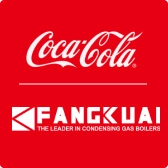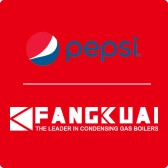Introduction to High-Pressure Steam Boilers - Boiler Selection Guide
date: 2024-09-19
Page preview:
Introduction
Are you curious about the powerhouse behind many industries' operations? Look no further than high-pressure steam boilers. These vital energy devices are the backbone of power plants, chemical factories, and pharmaceutical plants, among others. Let's delve into the world of high-pressure steam boilers to uncover their inner workings and importance.
Definition and Classification
What is a High-Pressure Steam Boiler?
A high-pressure steam boiler refers to a boiler that operates with steam pressure higher than 5.88MPa but lower than 9.81MPa. These boilers typically produce superheated steam with temperatures ranging from 510 to 540°C and have an evaporation capacity of 20 to 400t/h. Most high-pressure steam boilers are designed as single-drum water tube boilers and are commonly used in medium to large-scale power plants or industrial facilities with self-owned power plants.
Classification of High-Pressure Steam Boilers
Based on pressure levels, high-pressure steam boilers can be categorized into different types, including low-pressure boilers (below 2.5MPa), medium-pressure boilers (pressure between 2.5MPa and 6.0MPa), as well as ultra-high-pressure boilers, subcritical boilers, and supercritical boilers. These classifications help in determining the specific applications and operational requirements of each type of high-pressure steam boiler.
Structural Design and Functionality
High-pressure steam boilers are typically constructed with robust materials to withstand the high pressures and temperatures generated during operation. They feature advanced control systems and heat transfer surfaces to efficiently convert fuel energy into steam. The structural design of these boilers includes various safety features and components to ensure reliable and safe operation in industrial settings.
Role in Energy Generation
One of the primary functions of high-pressure steam boilers is to generate steam for energy production. In power plants, these boilers play a crucial role in driving turbines that generate electricity. The high-pressure steam produced by these boilers enables efficient energy conversion and power generation, making them indispensable in the energy sector.
Industrial Applications
High-pressure steam boilers find widespread applications across various industries, including power generation, chemical processing, pharmaceutical production, and more. These boilers provide the necessary steam power for heating, sterilization, material processing, and other industrial processes, making them essential equipment in modern industrial operations.
Advantages of High-Pressure Steam Boilers
Enhanced Efficiency and Energy Savings
High-pressure steam boilers excel in energy conversion, minimizing energy losses and maximizing fuel utilization. With their high efficiency, these boilers play a crucial role in reducing energy consumption and operating costs. The efficient heat transfer mechanisms within high-pressure steam boilers ensure optimal steam generation, making them a cost-effective and sustainable energy solution for various industries.
Versatile Applications and Wide Usage
The versatility of high-pressure steam boilers is unmatched, allowing them to cater to diverse industrial applications. From power plants to refineries and chemical plants, these boilers are indispensable for generating high-temperature and high-pressure steam. Their ability to drive turbines, provide heat for industrial processes, and support power generation showcases their adaptability and widespread usage in numerous sectors.
Reliable and Consistent Steam Capacity
High-pressure steam boilers provide a wide range of steam capacities from 0.5 tonnes/hour to 26 tonnes/hour. This reliable steam production capability ensures a steady supply of steam for industrial operations, meeting the needs of large companies. The reliable performance and steam output of these boilers contribute to uninterrupted production processes and increased operational efficiency.
Environmentally Friendly and Reduced Emissions
Compared to traditional coal-fired boilers, high-pressure steam boilers exhibit cleaner combustion processes, resulting in lower emissions and reduced environmental impact. The minimal pollutants generated during the combustion of fuels in these boilers contribute to a more sustainable and eco-friendly operation. By prioritizing environmental responsibility, high-pressure steam boilers align with modern industry standards for clean and efficient energy production.
Disadvantages of High-Pressure Steam Boilers
When it comes to high-pressure steam boilers, while they offer numerous advantages, it's essential to acknowledge their limitations and disadvantages. One significant concern revolves around safety, as these boilers operate at elevated pressures that can pose risks if not properly maintained and operated. Regular inspections, maintenance, and adherence to safety protocols are crucial to ensure safe operation and prevent potential accidents.
Maintenance requirements are another aspect that needs attention when dealing with high-pressure steam boilers. These boilers necessitate regular upkeep to guarantee optimal performance and prevent any potential issues. This includes periodic inspections, cleaning, and servicing of various components to ensure the boiler operates efficiently and effectively. By staying proactive with maintenance, one can mitigate the risk of breakdowns and costly repairs.
Additionally, the initial cost of acquiring and installing a high-pressure steam boiler can be a significant investment. This cost encompasses not only the purchase of the boiler itself but also installation expenses and any necessary modifications to the existing system. While the upfront expense may seem daunting, it's crucial to consider the long-term benefits and efficiencies that a high-pressure steam boiler can provide to industrial operations.
Application Areas of High-Pressure Steam Boilers
High-pressure steam boilers play a pivotal role in a diverse array of industries, showcasing their versatility and significance in various applications. Let's explore some key areas where these boilers are indispensable:
-
Power Plants: One of the primary domains where high-pressure steam boilers shine is in power plants. Here, they are crucial for producing the high-temperature and high-pressure steam needed to drive turbines, ultimately generating electricity to power homes, businesses, and industries.
-
Industrial Processes: Industries such as refineries, chemical plants, food processing facilities, and paper and pulp mills rely on high-pressure steam boilers for their operations. These boilers are instrumental in processes like heating, drying, evaporation, and distillation, ensuring efficient and reliable production processes.
-
Heating Systems: High-pressure steam boilers are integral components of heating systems, providing steam for space heating, hot water production, and other heating applications. Their ability to generate steam at high temperatures and pressures makes them well-suited for maintaining optimal heating conditions in various settings.
-
Oil and Gas Industry: In the oil and gas sector, high-pressure steam boilers are essential for a myriad of applications. From steam injection for enhanced oil recovery to steam-assisted gravity drainage, these boilers play a crucial role in facilitating key processes within the industry. Their reliability and efficiency make them indispensable assets in oil and gas operations.
These application areas underscore the importance and versatility of high-pressure steam boilers across a wide range of industries. Their ability to generate high-temperature and high-pressure steam makes them indispensable for powering essential processes in power generation, industrial production, heating systems, and the oil and gas sector. By understanding their diverse applications, we gain a deeper appreciation for the vital role that high-pressure steam boilers play in driving efficiency and productivity in various industries.
Working Principle of High-Pressure Steam Boilers
Working Principle of High-Pressure Steam Boilers
High-pressure steam boilers operate on a fascinating principle that drives their efficiency and reliability. At the core of their functionality lies the conversion of thermal energy from fuel combustion into powerful steam. This process begins with the combustion of fuel, such as coal, oil, or natural gas, in the boiler's combustion chamber. As the fuel and air interact, a chemical reaction occurs, releasing a significant amount of heat.
The next step in the working principle involves the crucial transfer of this heat energy to the water within the boiler. Through specialized heat exchangers, the high-temperature combustion gases come into contact with the water, initiating the heat transfer process. This intricate mechanism of convection, radiation, and conduction ensures that the water absorbs the heat and gradually increases in temperature.
As the water heats up, it undergoes a transformation, transitioning into steam. This conversion process is essential for generating the high-pressure steam that powers various industrial processes. The steam produced in the boiler is directed through pipelines to the target equipment, where it releases its thermal energy for heating, drying, or other essential operations.
Ultimately, the working principle of high-pressure steam boilers culminates in the efficient generation and utilization of steam for industrial applications. By harnessing the energy from fuel combustion and facilitating heat transfer to water, these boilers play a pivotal role in driving the machinery and processes that keep industries running smoothly. The intricate interplay of combustion, heat exchange, and steam generation underscores the importance of high-pressure steam boilers in the industrial landscape.
Safety Operation and Maintenance
Regular Inspections Ensure Safe Operation
To guarantee the safe and efficient operation of high-pressure steam boilers, regular inspections are essential. These inspections involve thorough checks of all boiler components to identify any potential issues or wear and tear. By conducting routine inspections, operators can address any concerns promptly and prevent safety hazards from arising.
Adherence to Safety Protocols is Crucial
Operating high-pressure steam boilers requires strict adherence to safety protocols. It is vital for operators to follow established guidelines and procedures to ensure the boiler's safe operation. By adhering to safety protocols, operators can minimize the risk of accidents, equipment malfunctions, and potential injuries in the workplace.
Maintenance for Optimal Performance
Proper maintenance is key to ensuring the optimal performance of high-pressure steam boilers. This includes regular cleaning, servicing, and repairs of the boiler components. By maintaining the boiler in top condition, operators can prevent breakdowns, extend the equipment's lifespan, and ensure consistent steam production.
Training and Certification for Operators
Operators of high-pressure steam boilers should undergo comprehensive training and certification to operate the equipment safely and effectively. Training programs cover boiler operation, maintenance procedures, and emergency protocols. By investing in operator training, companies can enhance safety practices and minimize risks associated with boiler operation.
Emergency Preparedness and Response
In the event of an emergency, it is crucial for operators to be prepared and equipped to respond effectively. Emergency response plans should be in place, detailing the steps to take in various emergency scenarios. By being prepared and practicing emergency response drills, operators can mitigate risks and ensure a swift and effective response to any unforeseen incidents.
Conclusion
In conclusion, high-pressure steam boilers play a crucial role in various industries, providing the necessary energy for their operations. While they have many advantages such as efficiency and reliability, they also come with disadvantages like high maintenance costs. These boilers are commonly used in power plants, chemical factories, and pharmaceutical plants due to their ability to generate large amounts of steam. Understanding the working principle and proper safety measures is essential for their effective operation. Overall, high-pressure steam boilers are indispensable in today's industrial landscape, powering the machinery that drives our modern world forward.

















